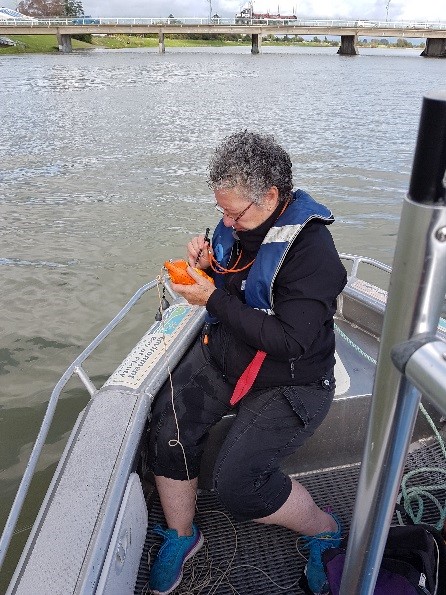Murapara Area School – Jo-Ann Rewi

2017 | Whatungarongaro te Tangata, Toitu te Whenua
School: Murapara Area School
Host: Bay of Plenty Regional Council
Region: Bay of Plenty
Ako ki te whakarongo whakarongo ki te ako
Great leaders are good listeners they learn to listen and listen to learn
Jo-Ann Rewi has taught for 17 years. Initially, she taught years 1-8 at Murupara Primary School, and recently (officially opened October 2016) years 1 – 13 at Murupara Area School. During the last 6 years, Jo-Ann (who always had a passion for science but lacked the confidence to lead) identified a need for herself, teaching staff and students to become more engaged and enthusiastic about Putaiao – Science.
Being of Māori descent, Jo-Ann knows that pre-European Māori did not use books or write things down; they were taught through the ‘living world’ of korero, waiata, whakairo and wānanga within the realms of their marae. From this, kaumātua (elders) were able to see leaders emerge and be nurtured, and the cycle of looking for leaders started again. After attending several Science Professional Learning and Development courses, and numerous discussions with the Principal around this curriculum area, a decision was made to put an action into place that would benefit everyone.
There were so many highlights for Jo-Ann during her placement that she would find it hard to choose just one as she insisted that every day with her Host at the Bay of Plenty Regional Council (BOPRC) was a new day of learning. By Jo-Ann’s own admission the highlight, and one that she considered priceless and privileged to be a part of, was an hour long helicopter flight with BOPRC Water Ecologist Paul Scholes and Land Management Officer Mieke Kapa. The objective of the trip and travelling by helicopter was to investigate concerns by Ngatimanawa Iwi, environmentalist and Timberlands Forest Management that a primary and significant water source for theIwi had, over a number of weeks started to discolour and tarnish. Armed with an array of water sampling bottles, chilly bins and a water quality instrument that measures one or more parameters including: electrical conductivity (EC), dissolved oxygen (DO), water temperature, turbidity, total dissolved solids (TDS), Redox, specific ions and pH levels. The journey begun.
Starting at one of the two entrances into Murupara , a bridge over the Rangitaiki River where the first of many kaitiaki and taniwha of Ngatimanawa reside, following the Rangitaiki River southward, hovering above the Kaingaroa Forest ( the largest man made forest in New Zealand) and on to the Wheao Dam and canal where the team thought the discolouration began. They were to be proven wrong and towards a small tributary Otamatea, which flows into the Rangitaiki. Here the team landed and procured another sample of water. Then on to the southern-most Pou Rahui (boundary) of Te Waha o Waipunga, back toward the Opurete spring, where the team chopper landed to take the last water sample. This area is surrounded by hectares of a low spreading shrub with branches, wide-spreading, dark grey to blackish bark slender reddish brown branchlets, commonly known as frost flats. It is one of a few plants that is able to survive the harsh conditions of the Central Plateau of the North Island.From the investigation the team concluded the discolouration and tarnishing was actually caused by insurmountable rainfall the week before thus causing high water levels and mineral laden water, which would clear in time.
Jo-Ann concluded from this experience and many others she had during her time at BOPRC, that she will be able to share her knowledge of the environment with students, teachers and whanau to give a clear vision of how the BOPRC and stake holders of Ngatimanawa work together to find solutions for environmental issues.
The Science Teaching Leadership Programme has provided Jo-Ann with an amazing professional learning journey. She is looking forward to applying this learning with students and teachers of Murupara Area School and their whanau. She would like to thank The Royal Society Te Apārangi and Nancy Willems and the Land Management Team from the Bay of Plenty Regional Council
Anei te Whakatauki – Whatu ngarongaro te tangata toitu te whenua
Man disappears but the land remains.
